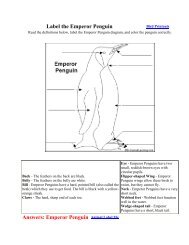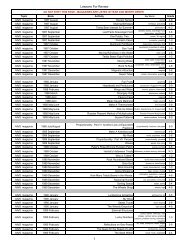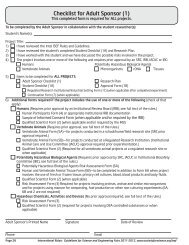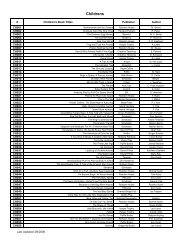BIOGRAPHY OF A RIVER
BIOGRAPHY OF A RIVER
BIOGRAPHY OF A RIVER
You also want an ePaper? Increase the reach of your titles
YUMPU automatically turns print PDFs into web optimized ePapers that Google loves.
samples such as every 1 or 2 feet.) Record the data for a later plot of the results versus depth.B. Collect water samples for N and P analysis (and pH and DO if needed). Whileanalysis may be done later, proper sample preservation techniques should beobserved. DO and pH may be run in the field using a pH/DO meter, test kit chemicals,or pH paper.C. Measure/record Secchi disc readings for each location or each sampling visit.D. Plot all parameters (pH, temperature, DO, N, P) versus depth for each location pervisit.III.Follow-upA. Analyze changes/trends in data observed over the course of the year. Is thelake more oligotrophic or eutrophic? How can you tell?B. If eutrophic, what are the sources of its nutrients?C. How can these nutrient sources be controlled or managed?IV.ExtensionsA. Consult the state environmental agency about the trophic status of state lakes, howthe sampled lake compares, and what specific management steps could be takento protect the lake.B. Read about some of the world’s largest lakes and their trophic status such asGreat Lakes, Lake Baikal, Lake Zurich, Lake Chad.RESOURCESContact state environmental agency (see lists in the appendix) to find out about local volunteer monitoringgroups.Water Analysis Kit, page F-69, Water Testing Fact Sheet3-28
















